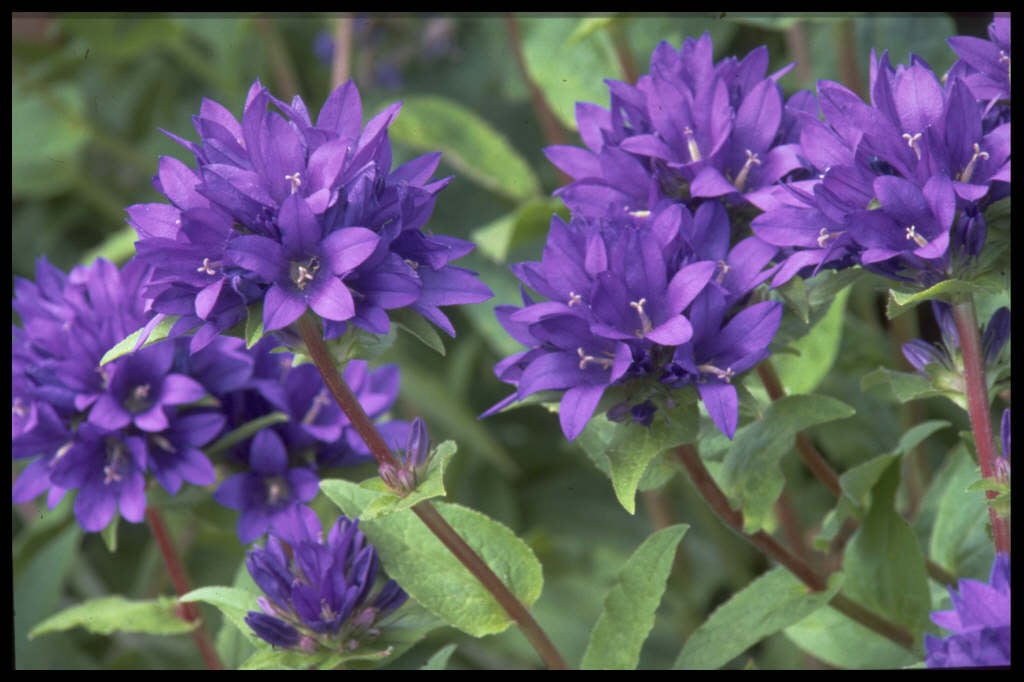Campanula glomerata
clustered bellflower
Vigorous rhizomatous perennial to about 45cm tall, forming an extensive clump of erect stems bearing dark green ovate leaves, and dense terminal racemes of deep violet-blue, or white, bell-shaped flowers all summer
Size
Ultimate height
0.1–0.5 metresTime to ultimate height
2–5 yearsUltimate spread
0.5–1 metresGrowing conditions
Moisture
Moist but well–drainedpH
Alkaline, NeutralColour & scent
| Stem | Flower | Foliage | Fruit | |
| Spring | Green | |||
|---|---|---|---|---|
| Summer | Blue Purple White | Green | ||
| Autumn | Green | |||
| Winter |
Position
- Full sun
- Partial shade
Aspect
South–facing or North–facing or East–facing or West–facing
Exposure
Exposed or Sheltered Hardiness
H7Botanical details
- Family
- Campanulaceae
- Native to GB / Ireland
- Yes
- Foliage
- Deciduous
- Habit
- Clump forming
- Genus
Campanula may be annuals, herbaceous or evergreen perennials, with bell or star-shaped, often blue, flowers in late spring or summer
- Name status
Correct
- Plant range
- Europe, temp. Asia
How to grow
Cultivation
Grow in fertile neutral to alkaline, moist but well-drained soil in sun or part shade. Delicate flower colours are best preserved in shade. Suitable for naturalizing in woodland and wildflower gardens
Propagation
Propagate by seed, propagate by division in spring or autumn or by basal softwood cuttings in spring
Suggested planting locations and garden types
- Cottage and informal garden
- Wildflower meadow
- Wildlife gardens
- Flower borders and beds
- Ground cover
Pruning
Cut back after flowering to prevent self-seeding and to encourage a second flush of flowers
Pests
Diseases
May be susceptible to a rust, powdery mildews and a leaf spot
Get involved
The Royal Horticultural Society is the UK’s leading gardening charity. We aim to enrich everyone’s life through plants, and make the UK a greener and more beautiful place.
